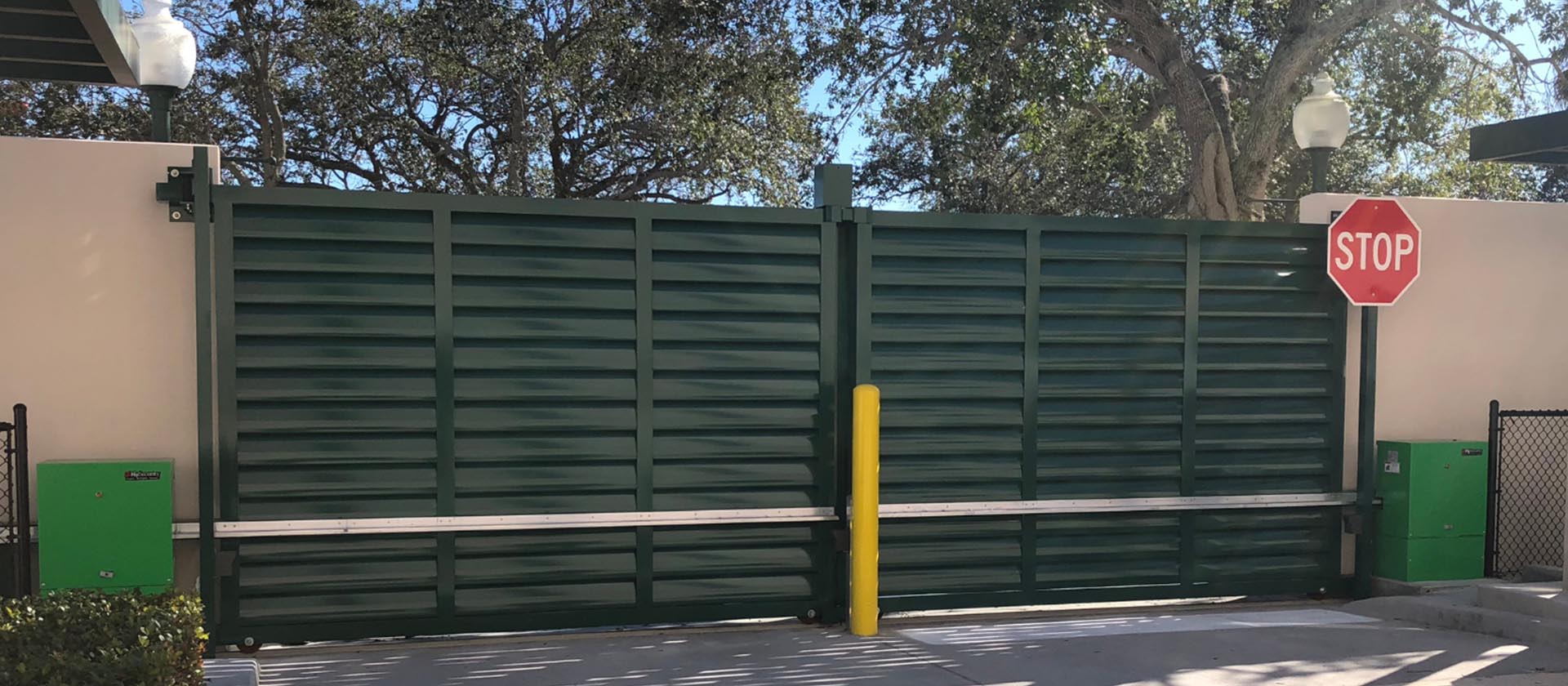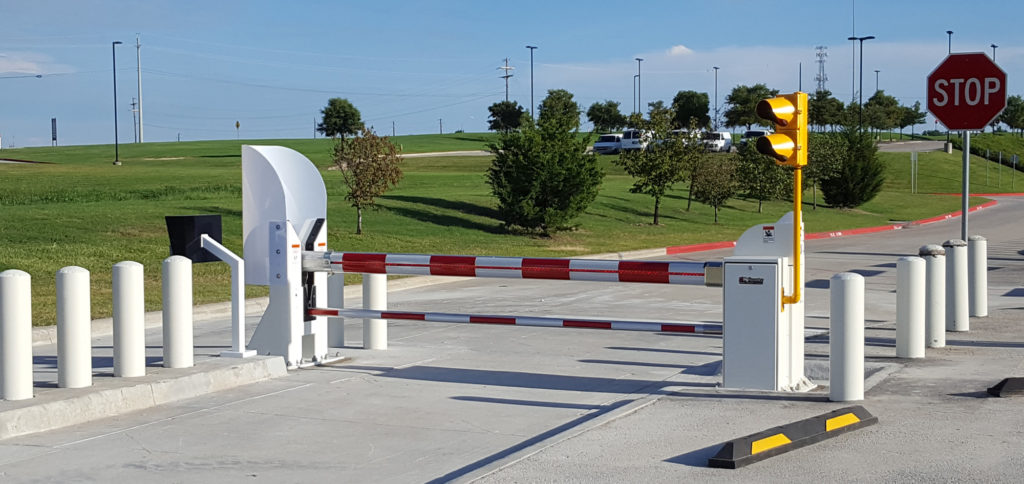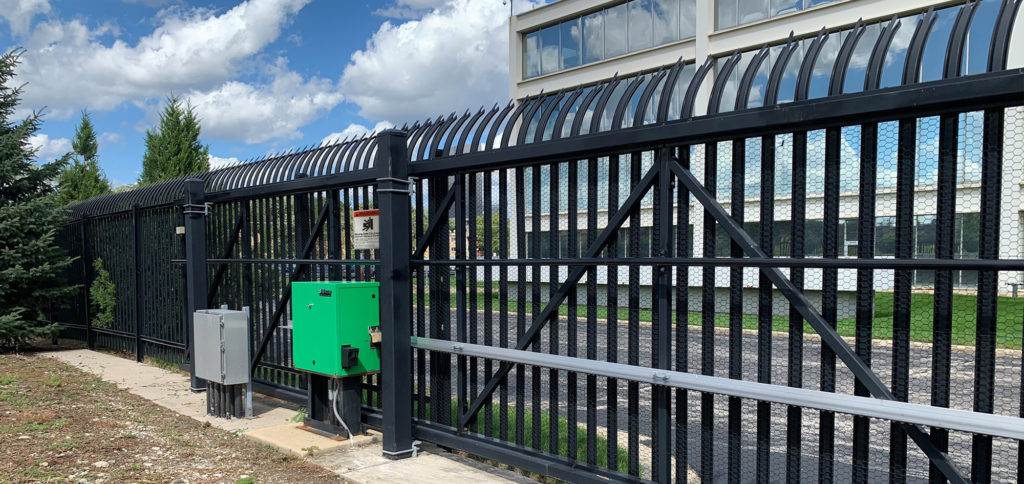
How to Choose the Right Gate Operator
Choosing the proper gate and gate operator requires a deep understanding of the security level, site conditions, vehicle throughput, visual impact and safety standards required by the site.
Here is a summary of the different gate types and design considerations for each.
-
Slide gates are highly secure and have a wide range of design options such as chain link, ornamental picket, ballistic fire wall, or crash rated. Slide gates are often integrated with a barrier arm for traffic control, or a crash rated barrier where the slide gate is used for security and the crash barrier is used as a final denial.
-
Swing gates are most often used on residential sites. They are aesthetically pleasing but require careful consideration for wind loading. Swing gates are inherently susceptible to high winds. To mitigate wind loading, it’s recommended to design the gate with up to 50% open space allowing the wind to pass through.
-
Vertical lift gates offer a convenient alternative when there is no room to slide or swing a gate. Vertical gates also offer a quick way to open many lanes at once and are especially effective in regions with heavy snow fall.
-
Hostile Vehicle Mitigation (HVM) barriers consist of wedge barriers, barrier arms, active bollards, and specific slide and swing gates configurations that protect against hostile vehicle threats. These barriers either cycle for every vehicle or only deployed under threat conditions otherwise known as final denial barriers.
- Barrier arms are often used in conjunction with a slide or swing gate and are primarily used for traffic control, anti-tailgating and to reduce vehicle strikes to the slide or swing gate. A barrier arm can also be crash rated and provide HVM protection (such as the StrongArm® M30/M50).
Once you’ve decided on the type of gate that will be used, the next order of business is identifying the proper gate operator. Here’s a list of the top four criteria for choosing the proper gate operator that will meet UL 325 compliance while providing the necessary security, throughput, and access control requirements of your client.
-
UL 325 Compliance: The first and arguably the most important is defining what UL 325 usage class your site falls into. The UL 3.25 standard defines Sites by four usage classes. These range from single family residential to restricted access and high security installations. Class I covers all single family, up to sites with 4 residences. Class II covers any multi-family residential application in excess of 4 residences. Class III is intended for Industrial usage where limited access is expected. One example is a warehouse property entrance not intended to serve the general public. Class IV is Restricted Access. Restricted access includes applications such as prison entrances that must be monitored either by a guard at the entrance, or via closed circuit TV. It’s important to note class I & II site have a speed limit of 1ft/sec.
-
Level of Security: Do you want a convenience open or a more hardened/secure access point? Convenience open is used primarily on residential or light commercial facilities where a more hardened access point would be required on an airport, data center or federal government facility. The answer to this question will put you in either a commercial, industrial or Hostile Vehicle Mitigation (HVM) category.
-
Speed of the operator: When choosing a slide gate for example, you’ll want to consider the size of the clear opening, who is traversing this access point and what volume of throughput this access will likely see throughout the day. A wider clear opening will of course take longer to open & close. If the security level requires the gate is cycled for every vehicle and gaining access quickly is important you may choose a faster operator to accommodate those requirements. HySecurity offers slide gate operators that travel as fast as 3ft/sec. It’s important to consider the UL 325 speed limit of slide gates for UL class I & II when making this decision.
-
Gate panel size and weight: Gate operators are classified by their speed, weigh capacity, UL class and application. For example, when selecting a HySecurity SlideDriver™ model, you’ll find speeds of 1-3ft/sec, weight capacity from 1,500 – 20,000 lbs, and some unique applications such as correctional specific models, UPS battery backup options or a modular option (view spec sheet for full details). Identifying the size & weight of your gate panel will help narrow down the long list of models to choose from. When choosing a swing gate, it's important to consider not only the weight but the size of the gate and its ability to withstand wind load. Swing gates are inherently susceptible to high winds that can cause operational issues. It’s advisable to make sure the gate panel provides at least 50% open space to mitigate these issues. HySecurity offers a unique solution to swing wind loading in the HydraSwing™ operator.
Looking for a personalized gate operator recommendation or site design help? Let's connect.
Products mentioned in this article.
-
Ultimate stopping power.Barrier ArmCrash RatedHostile Vehicle Mitigation
-
Legendary security, power, and durability.IndustrialSlide Gate

